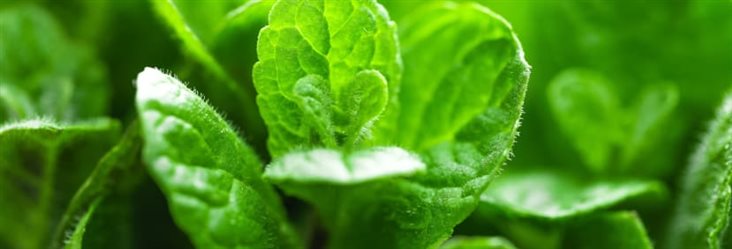Blue light sits between 420-470nm on the visible spectrum. Within horticultural lighting blue light is often utilised, and for good reason.

When plants receive blue light, this directly influences chlorophyll B production. The carotenoids in plants absorb the blue light and control leaf fall. Blue light also works to increase the opening of stomata within a plant. Stomata are minute openings found on plant leaves, that control the uptake of carbon dioxide as well as water loss. The increase of stomata prompts improvements in the plant’s metabolism, leading to a subsequent acceleration of plant growth. Therefore, typically plants that do receive optimum quantities of blue light will develop strong healthy leaves and stems.
For fully operational photosynthesis, blue light is only one of the key wavelengths needed. Therefore, typically within vertical farms and other indoor growing applications, you will find blue light used in conjunction with other wavelengths such as red (625-730 nm) or full-spectrum white light.
How does blue light affect plant biomass?

Biomass refers to the growth of leafy plants. The shorter blue light wavelengths influence leaf production and colouration.
When a plant is deprived of blue light, it will show signs of this through the appearance of its leaves and stems. Discolouration may occur; usually, green leaves, may yellow or take on a purplish hue. They may even drop. Some plants, for example tomatoes, if lacking blue light can develop other physiological defects such as blistering of intumescences on their leaves and/or stems. Additionally, plants without blue light will grow taller, as the plant searches for the missing light.
Whereas when a plant is supplied with lots of blue light, plants will remain shorter and produce a larger amount of leafy green biomass. Vegetative crops like lettuce can benefit greatly from blue light, as it can encourage healthy production of compounds including antioxidants and some vitamins. Thus, crop quality, appearance and nutrition can be improved with blue light.
How does blue light affect plant flowering?

Although blue light does have great benefits for plants, its effects on flowering are not the most noteworthy. Low levels of blue light are unlikely to have any effect on plant flowering. Higher intensities may help to promote the flowering of long-day plants and inhibit the flowering of short-day plants. But if looking for LED wavelengths specifically for flowering applications, red light would be more effective. Red light is more commonly used to influence and encourage flowering in plants.
However blue light can still have an influence on flowering plants. When applied towards to end of the flowering cycle, blue light can potentially increase terpenes, the strong-smelling oil within plants that give smell and flavour. Thus, increased terpenes will affect plant fragrance and taste. Secondly, blue light at this stage could also lead to higher Cannabinoid levels, which can increase the potency of crops. Cannabinoids work as a defence against excessive UV light and desiccation. They are not only found in cannabis plants but also in plants such as cloves, black pepper, Echinacea, broccoli, ginseng, and carrots. But there is no precise formula to obtain certain results, and so experimentation is key.
What happens if there is too much blue light?
Although blue is clearly beneficial to plants, there can be too much of a good thing. Too much blue light can lead to stunted plant growth, the over-exposure to this wavelength will suppress extension growth (height). Plants over-saturated with blue light will likely develop thick stems, and small dark green leaves, and will struggle to flower.
Therefore, to get the optimum benefits from blue light, if working in an application with no available sunlight, blue light is best used in conjunction with other wavelengths. Try a full-spectrum Treviso LED grow light.

